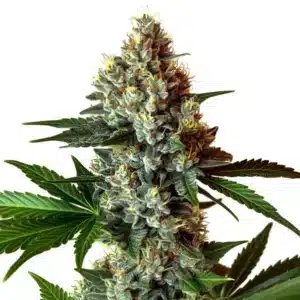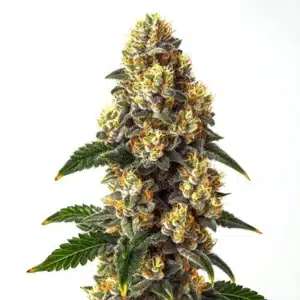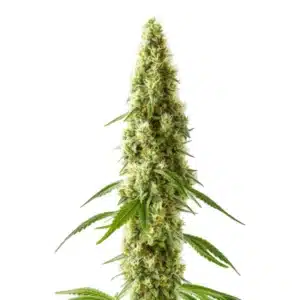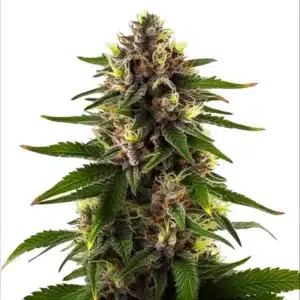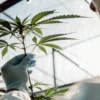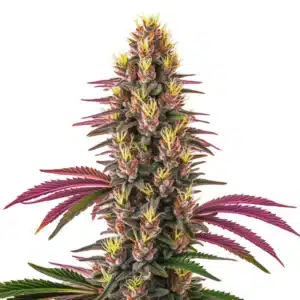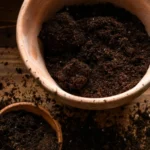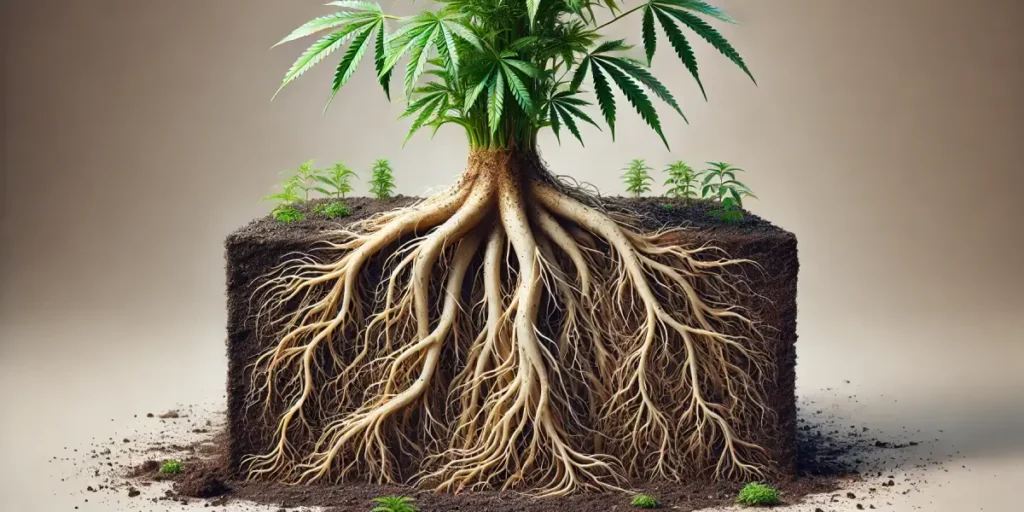
Accidentally Ripped Plant Roots: What to Do and How to Save Your Plant
Gardening mishaps happen to the best of us, and one of the most heart-stopping moments is discovering accidentally ripped plant roots. Whether you were repotting, transplanting, or trying to manage an overgrown root system, damaged roots can be alarming. But don’t panic your plant’s survival chances are better than you think. In this guide, we’ll explore why roots are essential, what happens when they’re damaged, and, most importantly, how to nurse your plant back to health.
Why Are Plant Roots So Important?
Plant roots are more than just anchors in the soil. They’re the lifelines of your greenery, absorbing water, nutrients, and oxygen. When roots are damaged, the plant’s ability to thrive is compromised, leading to potential stunted growth or even death. Understanding the role of roots is crucial for recognizing how to manage accidentally ripped plant roots.
Recommended Strains
Fat Bastard
|
|
THC | 30% - 38% (High) |
|
|
Type | Feminized |
|
|
Yield | High |
|
|
Phenotype | 50% Indica / 50% Sativa |
Fat Bastard Auto
|
|
THC | 30% - 38% (High) |
|
|
Type | Autoflowering |
|
|
Yield | High |
|
|
Phenotype | 50% Indica / 50% Sativa |
1. Nutrient Absorption
Roots are responsible for drawing essential nutrients like nitrogen, potassium, and phosphorus from the soil. Damaging them disrupts this process, making it harder for the plant to access what it needs to grow. Without a strong root system, plants struggle to perform photosynthesis effectively, which impacts their overall health and vitality.
2. Structural Support
A healthy root system provides stability, keeping your plant upright and able to withstand wind or minor disturbances. This support is particularly important for taller plants or those with heavy foliage, as they rely on their roots to maintain balance and stay anchored in place.
3. Oxygen Uptake
Roots breathe, too! They take in oxygen from the soil, which is vital for cellular respiration and energy production. Accidental damage can hinder this process, stressing your plant further and potentially leading to a decline in health if not addressed quickly.
Promos & Deals
Common Scenarios Leading to Accidentally Ripped Plant Roots
Repotting Gone Wrong
When transferring a plant to a larger pot, the roots can become tangled or stuck. Pulling too hard can cause tearing, especially in delicate species. It’s crucial to handle the root ball with care during this process to avoid unnecessary strain on the plant.
Transplant Shock
Moving a plant from one location to another often results in some degree of root damage. Even the most careful gardener can experience this issue. Transplant shock can be exacerbated by environmental changes, such as differences in sunlight, temperature, or soil composition.
Overenthusiastic Pruning
While pruning roots can be beneficial for certain plants, overdoing it can leave them with too few roots to sustain their needs. This is especially risky for plants that rely on extensive root systems to support their growth and nutrient uptake.
Unintentional Snags
Outdoor plants are especially prone to accidental damage from tools, pets, or even curious kids. Roots close to the surface are particularly vulnerable, and even a minor disturbance can cause significant harm if not addressed promptly.
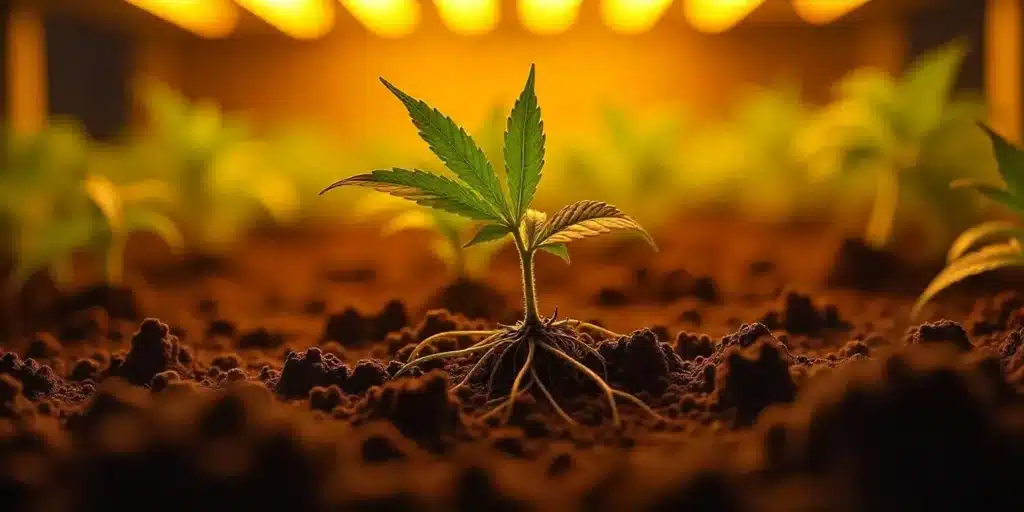
What Happens to Plants With Damaged Roots?
The extent of the damage determines how the plant will respond. Understanding the consequences of accidentally ripped plant roots can help you assess your next steps and develop an effective recovery plan.
1. Wilting Leaves
When roots are damaged, the plant’s ability to absorb water is immediately compromised. This leads to one of the most visible symptoms: wilting leaves. Without sufficient water uptake, the leaves may appear limp, discolored, or even dry around the edges. For flowering plants, you might notice flowers wilting faster than usual or buds failing to open. While this can be alarming, wilting is often the plant’s way of signaling distress, and it may recover once the root system begins to heal.
2. Stunted Growth
In addition to water, roots are the primary channel through which plants absorb nutrients. When they’re damaged, nutrient uptake slows significantly, leading to stunted growth. This can manifest in various ways: smaller leaves, delayed flowering, and reduced fruit production. Over time, the plant may focus its energy on repairing its root system instead of producing new foliage or flowers, which can give the appearance of a paused growth phase.
3. Increased Susceptibility to Disease
Damaged roots are like open wounds, providing an entry point for soilborne pathogens, such as fungi and bacteria. These pathogens can infect the root system, causing further decay and reducing the plant’s ability to recover. Root rot, a common issue in such cases, can spread quickly if the plant is overwatered or kept in poorly draining soil. Signs of root rot include a foul smell, darkened roots, and mushy texture. Addressing these issues promptly with antifungal treatments or improved drainage is essential.
4. Nutritional Deficiencies
With damaged roots, the plant may struggle to access key nutrients such as nitrogen, potassium, and magnesium. This can lead to visible signs of deficiencies, such as yellowing leaves (chlorosis), purpling of stems, or browning leaf edges. These symptoms often mimic other plant stressors, so it’s important to link them back to the root damage for proper treatment.
5. Reduced Stability
Roots play a crucial role in anchoring the plant. When they are ripped or severely damaged, the plant may become wobbly or even fall over, particularly in windy conditions or when the soil is loose. This instability can stress the plant further and increase the risk of additional root damage as it shifts in the soil.
6. Recovery Delays
Damaged roots force the plant to allocate its energy resources toward healing rather than growth or reproduction. This can extend the recovery period, during which the plant appears dormant or underperforming. While frustrating, this phase is a critical time for the plant to rebuild its root system, and with proper care, it can emerge stronger over time.
Signs of Root Health
Healthy roots are the foundation of a thriving plant. They play a vital role in water and nutrient uptake, oxygen exchange, and overall plant stability. Recognizing the signs of good root health is essential for ensuring your plants are growing in optimal conditions. By regularly inspecting your plant’s root system, you can catch potential issues early and prevent long-term damage.
1. Color
The color of roots is a primary indicator of their health. Healthy roots are typically white or light tan, reflecting their vitality and efficient nutrient uptake. Dark, mushy, or foul-smelling roots, on the other hand, indicate root rot or disease and should be addressed immediately. These signs often result from overwatering, poor drainage, or fungal infections that thrive in overly moist conditions.
2. Texture
The texture of roots should feel firm and slightly flexible. This indicates they are healthy and capable of supporting the plant’s needs. Brittle roots that snap easily or overly soft, slimy roots often point to underlying problems such as nutrient deficiencies, physical damage, or infections. Taking the time to gently handle and observe the texture of roots can reveal a lot about your plant’s overall condition.
3. Growth Patterns
Healthy roots grow in a well-distributed pattern, filling the pot evenly without circling or becoming root-bound. When roots spiral around the pot, it’s a sign they’ve outgrown their container and need repotting. Balanced root growth not only ensures efficient nutrient absorption but also provides better structural support for the plant, allowing it to grow taller and stronger without the risk of tipping over.
Healthy roots are the foundation of a thriving plant. Recognizing the signs of good root health can help you identify potential problems early.
Immediate Steps to Take After Root Damage
If you’ve accidentally ripped plant roots, quick action is critical to improving your plant’s chances of survival.
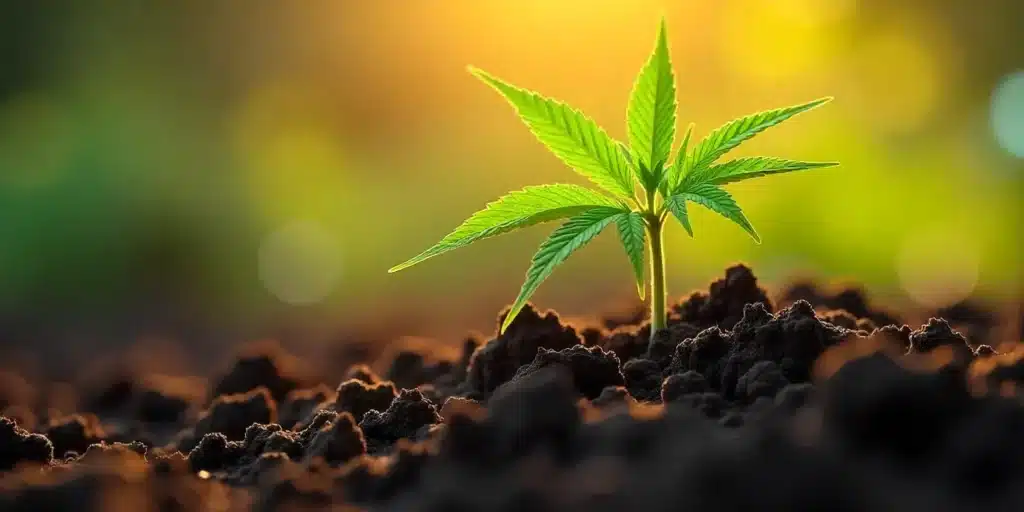
1. Assess the Damage
Gently examine the roots to determine how severe the damage is. Minor tears may heal on their own, while extensive root loss requires more intervention. Carefully inspecting the affected area will help you decide on the best course of action.
2. Trim Damaged Roots
Using sterilized scissors, snip away frayed or dead root sections. Clean cuts heal more effectively and reduce the risk of infection. It’s important to use sharp tools to avoid crushing the roots, which can exacerbate the damage.
3. Replant Properly
Ensure the plant is securely placed in nutrient-rich, well-draining soil. Avoid compacting the soil too much, as this can restrict oxygen flow to the remaining roots. Proper replanting techniques are crucial for creating a supportive environment that encourages recovery.
Soil and Root Compatibility
Soil and roots share a symbiotic relationship that significantly influences plant health. Choosing the right soil for your plants creates an environment where roots can thrive, grow, and repair themselves effectively. Well-aerated, nutrient-rich soil allows roots to spread easily, absorb essential minerals, and exchange gases like oxygen and carbon dioxide efficiently. When the soil is overly compacted or waterlogged, it suffocates roots, leading to stress and potential damage. Ensuring proper drainage while maintaining moisture balance is key to fostering a supportive ecosystem for your plants.
The compatibility between soil type and a plant’s specific needs cannot be overstated. Certain plants prefer sandy soils for better drainage, while others thrive in loamy or clay-rich environments. Additionally, the soil’s pH level plays a critical role in nutrient availability. An imbalance can inhibit root function and nutrient uptake, stunting plant growth. By understanding your plant’s preferences and tailoring the soil conditions accordingly, you create a robust foundation that enhances both root health and overall plant vitality.
Root Damage in Hydroponic Systems
Hydroponic gardening presents unique challenges when it comes to root damage. Here’s how to address issues in these systems.
1. Identify the Cause
Root damage in hydroponics is often caused by improper oxygenation, nutrient imbalances, or disease. Addressing the root cause is essential for recovery.
2. Maintain Clean Water
Ensure the water is free from contaminants and pathogens. Regularly change the solution and clean the system to prevent further damage.
3. Support Root Growth
Use root-promoting additives and monitor nutrient levels closely to encourage regrowth and overall plant health.
Role of Mycorrhizae in Root Recovery
Mycorrhizae, a group of beneficial fungi, play a crucial role in supporting plant health, particularly when recovering from root damage. These fungi form symbiotic relationships with plant roots, extending their network far beyond what the roots could achieve alone. This partnership is especially valuable in aiding the recovery of stressed or damaged roots by enhancing the plant’s ability to absorb water and nutrients.
When roots are damaged, their ability to access essential nutrients like phosphorus is often compromised. Mycorrhizae help bridge this gap by acting as an intermediary, drawing nutrients from the soil and delivering them directly to the plant. This not only accelerates recovery but also strengthens the plant against future stress. Additionally, mycorrhizae create a protective barrier around the roots, reducing the likelihood of infections by harmful pathogens. This natural defense system is particularly beneficial for plants recovering in less-than-ideal conditions, such as compacted or poorly draining soil.
Beyond nutrient absorption and protection, mycorrhizae also improve soil structure. By binding soil particles together, they enhance aeration and water retention, creating a more hospitable environment for new root growth. For gardeners and growers, introducing mycorrhizal fungi to the soil can significantly boost the recovery process and promote long-term plant health.
Mycorrhizal fungi form symbiotic relationships with plant roots, offering numerous benefits that can aid recovery.
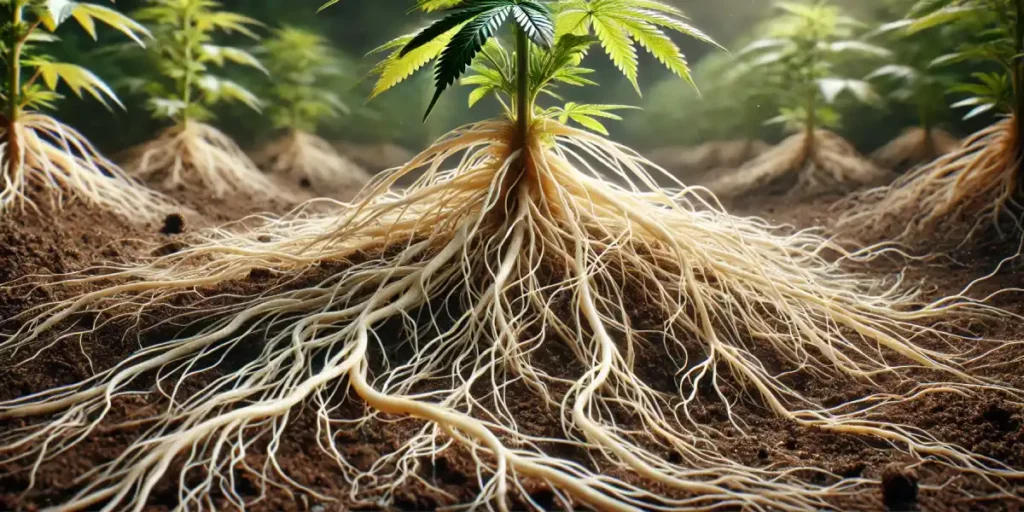
DIY Root Care Solutions
For a hands-on approach, try these homemade remedies to support root recovery.
1. Aloe Vera Solution
Mix aloe vera gel with water to create a natural rooting tonic. Aloe vera contains compounds that promote healing and root growth.
2. Cinnamon Powder
Sprinkle cinnamon on damaged roots to act as a natural antifungal and antibacterial agent.
3. Homemade Compost Tea
Brew a nutrient-rich compost tea to nourish the soil and stimulate root regeneration. Use this as a gentle fertilizer for stressed plants.
How to Help Plants Recover From Root Damage
The aftermath of accidentally ripped plant roots doesn’t have to spell disaster. With proper care and patience, many plants can bounce back and even thrive.
1. Provide Extra Nutrients
Consider using a diluted, high-phosphorus fertilizer to encourage root regrowth. Avoid over-fertilizing, as this can add stress to an already weakened plant. Phosphorus is particularly effective in promoting healthy root development and accelerating recovery.
2. Minimize Stress Factors
Keep your plant in a stable environment with adequate light, humidity, and temperature. Avoid moving it again until it has fully recovered. Reducing external stressors gives the plant the best chance to focus its energy on healing.
3. Monitor Progress
Check for signs of new growth or improvements in leaf condition over the coming weeks. Be patient recovery takes time. Regular monitoring allows you to catch and address any potential issues early.
Preventing Root Damage in the Future
Preventing root damage requires a combination of careful handling, proper planning, and attention to the specific needs of your plants. When repotting, it is essential to approach the process gently. Loosening the soil around the roots and ensuring that the plant is not forcibly removed from its container can make a significant difference. For plants in pots, tapping the sides of the container to release the root ball is an effective way to minimize stress and avoid tearing.
Using the right tools is another key factor in protecting plant roots. Sharp, clean tools ensure that any cuts made during pruning or division are precise and do not crush or bruise the roots. Dull tools can cause unnecessary harm, leading to slower healing and increased vulnerability to infections.
Timing also plays an important role in root care. Choosing the right season for transplanting, typically during a plant’s dormant period, can help reduce shock and give the roots the best chance to adapt to their new environment. Additionally, keeping the plant well-watered before handling makes the roots more pliable and less likely to break.
Creating an environment that supports healthy root growth is essential for long-term prevention of damage. Ensuring the soil is well-draining, nutrient-rich, and appropriate for the plant’s species promotes strong, resilient roots. For outdoor plants, avoiding compacted soil and protecting roots from accidental disturbance by tools, pets, or foot traffic helps maintain their integrity. By focusing on these aspects of plant care, you can effectively safeguard against root damage and ensure your plants remain healthy and robust.
FAQs About Accidentally Ripped Plant Roots
Can a plant survive with damaged roots?
Yes, many plants can survive root damage, especially if the main root system remains intact. Recovery depends on the plant species and the extent of the damage. With the right care, most plants can recover fully.
Should I add rooting hormones?
Rooting hormones can help promote new root growth, particularly for cuttings or plants with significant damage. They are especially useful for encouraging regrowth in delicate or slow-recovering species.
How long does recovery take?
Recovery time varies but typically ranges from a few weeks to a few months. Providing optimal care accelerates the process and improves the plant’s chances of a full recovery.




